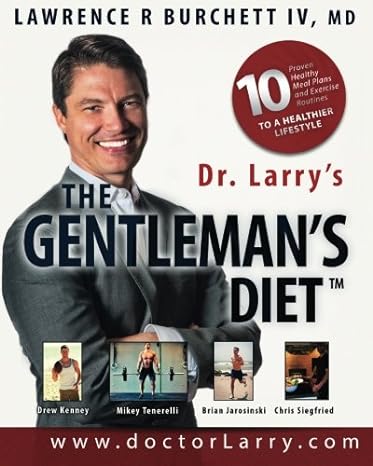The Two Most Important Things You Can Do to Prevent Injuries While Exercising

[cs_content][cs_section bg_image=”http://larryburchett.wpengine.com/wp-content/uploads/2016/09/DL-Scrubs-folded-1.jpg” parallax=”false” separator_top_type=”none” separator_top_height=”50px” separator_top_angle_point=”50″ separator_bottom_type=”none” separator_bottom_height=”50px” separator_bottom_angle_point=”50″ style=”margin: 0px;padding: 0px;background-size: cover;background-position: 61% 8%;”][cs_row inner_container=”false” marginless_columns=”false” style=”margin: 0px auto;padding: 0px;background-image: url("http://five.templatehub.wpengine.com/wp-content/uploads/sites/6/2016/08/background-overlay.png");”][cs_column fade=”false” fade_animation=”in” fade_animation_offset=”45px” fade_duration=”750″ type=”2/3″ style=”padding: 0px;”][x_gap size=”200px” class=”cs-hide-sm cs-hide-xs”][x_gap size=”150px” class=”cs-hide-xl cs-hide-lg cs-hide-md”][x_raw_content style=”margin: 10px;”]
The Two Most Important Things You Can Do to Prevent Injuries While Exercising
[/x_raw_content][x_gap size=”350px”][/cs_column][cs_column fade=”false” fade_animation=”in” fade_animation_offset=”45px” fade_duration=”750″ type=”1/3″ style=”padding: 0px;”] [/cs_column][/cs_row][/cs_section][cs_section bg_color=”hsl(0, 0%, 100%)” parallax=”false” separator_top_type=”none” separator_top_height=”50px” separator_top_angle_point=”50″ separator_bottom_type=”none” separator_bottom_height=”50px” separator_bottom_angle_point=”50″ style=”margin: 0px;padding: 45px 0px;”][cs_row inner_container=”true” marginless_columns=”false” style=”margin: 0px auto;padding: 0px;”][cs_column fade=”false” fade_animation=”in” fade_animation_offset=”45px” fade_duration=”750″ type=”2/3″ style=”padding: 0px;”][cs_text]Reviewed & Approved by Dr. Larry
[dropcap]Y[/dropcap]ou’re probably going to get hurt at some point, according to Steve Lombardi, personal trainer and 50-year bodybuilding veteran — but the goal is to minimize how often and how seriously you hurt yourself throughout your lifetime of exercising.
Here are Steve’s two biggest tips for how to prevent injuries while exercising:[/cs_text][x_video_player type=”16:9″ src=”https://youtu.be/gJZ3oBc3K4E” hide_controls=”false” autoplay=”false” no_container=”false” preload=”none” advanced_controls=”false” muted=”false” loop=”false” poster=””][cs_text]
1. Practice Good Form
Common exercise injuries tend to happen one of two ways: through incorrect form, or by pushing too hard too fast.
Working out with incorrect form isn’t just some gym faux pas. Correct form exists to prevent injury while exercising. You’ve heard that you’re supposed to “lift with your knees, not your back” when you’re moving your friends into a new home, right? Anyone who’s failed to heed that classic piece of advice wound up with a very sore back. Using the correct form will help you prevent workout injury, and decrease the likelihood of developing chronic pain from repeatedly using the incorrect form.
The best way to ensure that you’re using correct form while working out? Ask for help from someone who’s experienced! A fitness instructor or gym supervisor should be able to assess your form and make sure you’re practicing good exercise safety and injury prevention methods.
Work out in front of a mirror. It’s not vanity; it’s a great way to see your form while exercising and correct any form problems that you see. Once you can tell what correct form feels like, you’ll be able to correct yourself without needing a mirror or an extra set of eyes.
2. Practice Patience
Steve cautions that the other most common exercise injuries stem from pushing yourself too hard, too often and too fast. Rather than focusing on the “big picture” and your overall weight loss goals, try to set much smaller, more realistic goals for yourself.
Steve focuses on fitness plans that span years, and his experience reminds him to approach that goal very slowly if he’s interested in preventing injury during exercise.
The Importance of Fitness Injury Prevention
If you sustain an injury from exercise (as we all do once in a while) it won’t just make your daily life a literal pain in the neck. It’ll keep you from continuing to progress in the gym. Workout injuries set you back, naturally, but you’ll have to avoid giving into frustration and trying to get yourself back to your original pace too soon.
Working out too hard with an injury will likely just exacerbate the problem, which will:
- push your progress back even farther
- increase the likelihood of injuring yourself again
- lengthen the healing time of your current injury
The best offense against injury during exercise is a good defense! Preventing exercise injuries before they happen is the best thing you can do for health while pursuing your fitness goals.
Injury Prevention Workouts to Add to Your Routine
You want to loosen up what your regular workout will tighten in order to prevent strains, and strengthen the supporting muscles around injury-prone areas to protect them from the beating they take when you’re active.
Try these three injury prevention workouts three times a week to help protect these common vulnerable areas:
1. Neck and Shoulders
Grab a resistance band and stand with your feet close together. Hold the resistance band in front of you, palm-side up, elbows bent at a 90-degree angle tucked against your hips, and your inner wrists parallel in front of you. Stand straight with your chin slightly tucked and your neck straight and lengthened.
Keep your elbows fixed at your hips and pull the resistance band outward as far as you can while keeping your forearms level; pressing your shoulder blades together. Slowly return to center, and repeat for 20–30 reps.
2. Ankles
Using the same resistance band, sit on the floor with one leg extended out and your back straight. Loop the resistance band around the ball of the extended foot. Hold the resistance band tightly in both hands with your toes flexed upward, and then slowly press your foot forward to point your toes while maintaining the same level of resistance on the band.
You should feel it stretch the front of your ankle and top of your foot, and it’ll strengthen your foot’s arch. Slowly flex your toes upward again and repeat for about 20 reps on each leg.
3. Knees
By strengthening your posterior chain muscles, you can better protect the forward muscles and joints in your leg; this is particularly helpful for runners. Grab a pair of medium-weight dumbbells, stand straight with your knees slightly bend and arms loose at your sides with the weights in each hand.
Bend forward at the hips while keeping your back and neck straight (arms and weights should still be directly perpendicular to the floor). Bend as far as you can without rounding your back. Tighten the backs of your legs and glutes to pull yourself back up rather than pulling on your back muscles to do it. Repeat for three sets of about 12 reps.
Other Exercise Injury Prevention Tips
Learning how to prevent injury during exercise begins with understanding your own body. Avoiding injury while exercising can happen by knowing which parts of your own body are most vulnerable to injury or sensitive to strain. Take care to slowly strengthen those areas while avoiding pushing them too hard too quickly.
Understanding how your favorite physical activities, sports, and exercise routine will affect the more vulnerable parts of your body will also help you to prevent exercise injury. For example, runners will need to take greater care to properly stretch to avoid shin splints. Lifters will need to watch their spine and strengthen the smaller supporting muscles around their neck and lower back. Swimmers will need to stretch and strengthen their shoulders and elbows.
Injury prevention while exercising is crucial to taking care of yourself while you’re working toward your fitness goals. Get familiar with how to prevent injuries during exercise so that you can continue to progress towards your goals without being set back by pain.
[/cs_text][x_gap size=”50px”][/cs_column][cs_column fade=”false” fade_animation=”in” fade_animation_offset=”45px” fade_duration=”750″ type=”1/3″ style=”padding: 0px;”][x_widget_area sidebar=”sidebar-main” ][x_widget_area sidebar=”ups-sidebar-adoption-services” class=”man”][/cs_column][/cs_row][cs_row inner_container=”true” marginless_columns=”false” style=”margin: 0px auto;padding: 0px 0px 30px;border-style: solid;border-width: 1px;”][cs_column fade=”false” fade_animation=”in” fade_animation_offset=”45px” fade_duration=”750″ type=”1/1″ style=”padding: 0px;”][cs_text]
Featured Content
[/cs_text][/cs_column][/cs_row][/cs_section][cs_section parallax=”false” separator_top_type=”none” separator_top_height=”50px” separator_top_angle_point=”50″ separator_bottom_type=”none” separator_bottom_height=”50px” separator_bottom_angle_point=”50″ style=”margin: 0px;padding: 20px 0px 0px;”][cs_row inner_container=”true” marginless_columns=”false” style=”margin: 0px auto;padding: 0px;”][cs_column fade=”false” fade_animation=”in” fade_animation_offset=”45px” fade_duration=”750″ type=”1/1″ style=”padding: 0px;”][ess_grid alias=”featured_content”][/cs_column][/cs_row][/cs_section][/cs_content]


